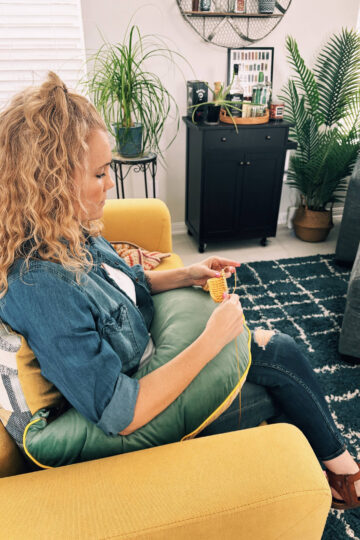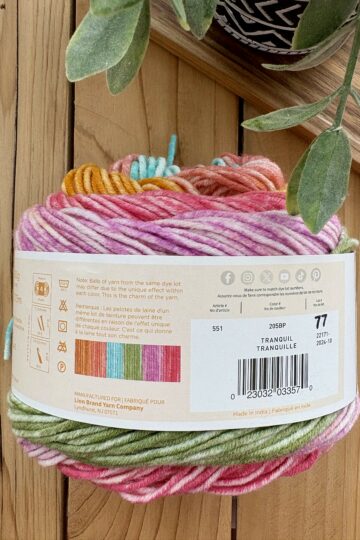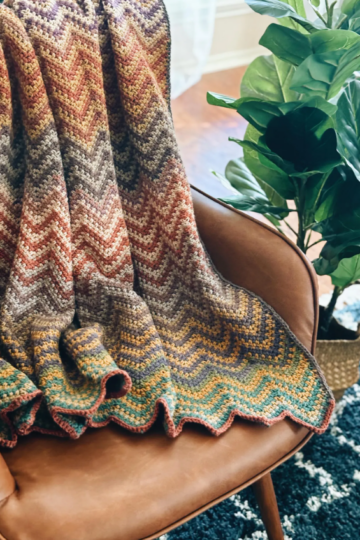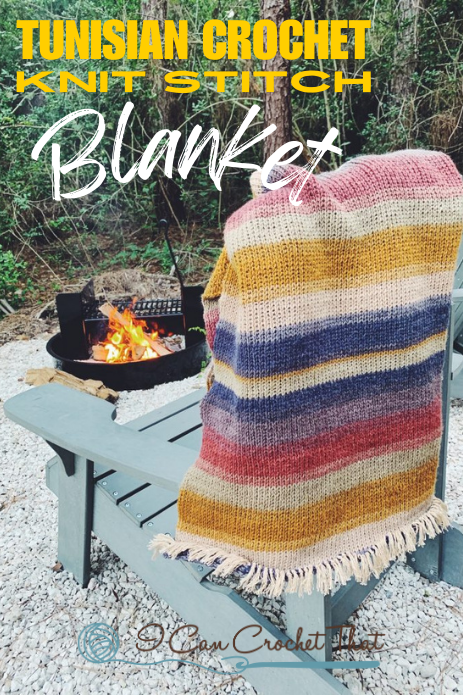Learn how to wash a crochet blanket properly in this guide to proper care, ensuring your cherished crochet creation stays clean and cozy for years to come.

Crocheting a beautiful blanket is a labor of love, and the finished piece often becomes a cherished heirloom or cozy companion. However, as much care as you put into crafting your crochet masterpiece, it's equally important to know how to keep it clean and cozy!
This guide will show you the ropes on how to wash your crochet blanket so it stays fresh, colorful, and soft for years to come.
Let's get started and ensure your crochet blanket maintains its best appearance and feel!
You might be wondering, "Can you wash a crochet blanket?"
Yes, you can wash a crochet blanket. However, the washing method and care instructions can vary depending on factors such as the type of yarn used, the complexity of the crochet design, and the preferences of the person who made the blanket.
Hand washing with a gentle detergent and air drying on a flat surface is a safe approach that helps preserve the blanket's shape and quality. If you choose to use a washing machine, it's essential to follow the yarn label's care instructions and use a delicate or low-heat setting to minimize potential damage.
Always check for any specific care recommendations provided by the blanket's maker or on the care label if available.
Read on for all of the details about handwashing, machine washing, and drying your crochet blanket!
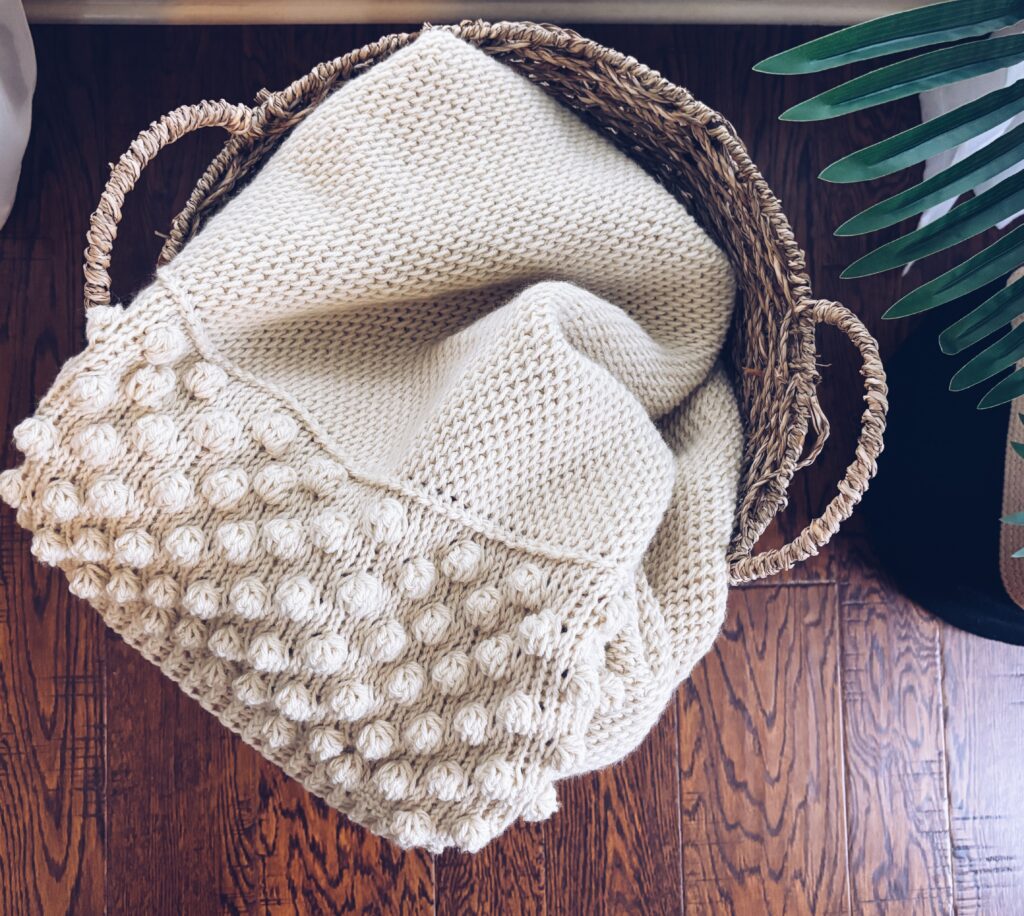
Assessing the Crocheted Blanket
Before you even begin washing your crochet blanket, take a moment to assess its condition and gather the necessary supplies. This initial step will help you determine the best approach for cleaning and ensure that your blanket remains in excellent shape.
Identifying the type of yarn used:
Check if you know the type of yarn used in your crochet project. Different yarn materials, such as acrylic yarn, cotton yarn, or wool yarn, may require slightly different care. Be sure to check the yarn label for the type of yarn it is.
If you received this as a gift, hopefully, it came with care instructions, which will include the type of yarn the blanket is made from.
Checking for any loose threads or damaged areas:
Carefully inspect the entire blanket for loose threads, snags, or any damage. If you spot any issues, address them before washing to prevent further problems.
Removing any surface dirt or debris:
Gently shake or brush the blanket to remove any loose dirt or debris on the surface. This simple step will make the washing process more effective and prevent dirt from embedding itself during cleaning.
By assessing your crochet blanket's condition and understanding the yarn used, you'll be better prepared to choose the right cleaning method and ensure your blanket remains in pristine condition. Now, let's move on to the actual cleaning process.
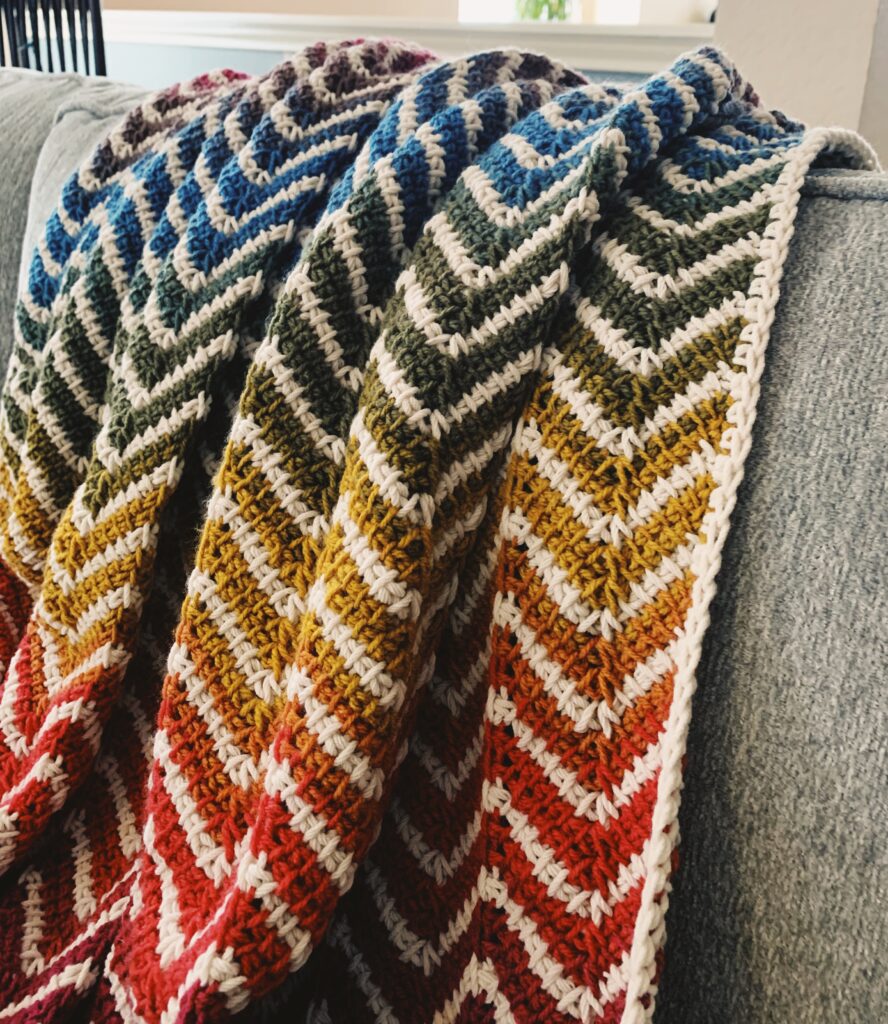
Hand Washing Your Crochet Blanket
Hand washing is often the safest and most gentle method for cleaning crochet blankets, especially if you're unsure about the yarn type or if your blanket is delicate.
Here's a step-by-step guide on how to hand wash your crochet blanket effectively:
Gathering the necessary supplies:
- Fill a basin or bathtub with lukewarm water. You'll need enough water to submerge the entire blanket.
- Choose a mild detergent suitable for delicate fabrics. Avoid harsh detergents that can damage your crochet work.
- Have a clean towel or two nearby for drying and pressing the blanket.
Preparing a gentle detergent solution:
- Add a small amount of the mild detergent to the lukewarm water. Follow the detergent's instructions for the right amount to use.
Soaking and gently agitating the blanket:
- Submerge your crochet blanket in the soapy water, ensuring it's fully covered.
- Gently agitate the water by swishing the blanket around. Do not scrub or rub vigorously, as this can cause damage to the delicate stitches.
- Let the blanket soak for about 5-10 minutes to allow the detergent to work on dirt and odors.
Rinsing and removing excess water:
- Drain the soapy water and refill the basin with clean, lukewarm water.
- Rinse the crochet blanket by gently swishing it in the water until all soap is removed. Repeat the rinsing process if necessary until the water runs clear.
- Avoid wringing or twisting the crocheted blanket, as this can distort the stitches.

Blocking the blanket for drying:
- To restore the shape and size of your crochet blanket, block it. Lay the damp blanket flat (it needs to be a flat surface and not a drying rack because that causes stretching) on a clean, dry towel or a blocking board.
- Gently stretch and shape the blanket to its original dimensions, paying extra attention to any intricate stitch patterns.
- Use blocking pins to secure the edges and corners in place.
- Allow the blanket to air dry completely, which may take a day or more, depending on the size and thickness of the blanket.
Hand washing your crochet blanket with care ensures that it stays clean and maintains its beautiful texture and color. If you're unsure about hand washing, we'll also cover machine washing in the next section.
Machine Washing Your Crochet Blanket (if applicable)
While hand washing is the gentlest method for cleaning crochet blankets, some blankets may be suitable for machine washing, especially if the yarn and construction can withstand it. If you decide to use a washing machine, follow these steps to protect your crochet blanket:
When machine washing is safe:
- Consider machine washing only if your crochet blanket is made from yarn that can handle it. Sturdier materials like acrylic (also called synthetic yarns) and some cotton blends are more machine-friendly.
- Ensure that the blanket doesn't have delicate embellishments or intricate lacework that could snag in the machine.
Using a delicate cycle or hand wash cycle:
- Place your crochet blanket in a mesh laundry bag or pillowcase with a zipper or tie to prevent tangling and snagging during the wash.
- Use a gentle cycle or hand wash cycle on your washing machine, and set the water temperature to cold water, cool water (my machine says tap cold) or lukewarm. Avoid hot water, as it can cause the yarn to shrink or lose its color.
- Add a small amount of mild detergent suitable for delicate fabrics. A gentle laundry detergent is important. (What about fabric softener? See note section below!
- Once the machine washing is complete, carefully remove the blanket from the mesh laundry bag or pillowcase.

What about fabric softener?
Using fabric softener when washing a crochet blanket, whether by hand or machine, can be a matter of personal preference. Here are some considerations:
Benefits of Using Fabric Softener:
- Fabric softeners can make your crochet blanket feel softer and more comfortable against the skin.
- They can help reduce static electricity, which can be beneficial, especially during dry seasons.
Potential Drawbacks:
- Some fabric softeners may contain chemicals that could be harsh on delicate yarn or fibers. It's essential to choose a gentle, hypoallergenic fabric softener suitable for delicate fabrics.
- Excessive use of fabric softener can build up on the yarn, making it less absorbent and reducing its breathability.
Tips for Using Fabric Softener:
- If you choose to use fabric softener or, follow the product's instructions and use it sparingly.
- Consider adding fabric softener during the final rinse when hand washing or using the rinse cycle when machine washing to minimize residue buildup.
- Be cautious when using fabric softener with natural fiber blankets like wool or if your crochet blanket has intricate stitch patterns that may trap the softener.
If you're uncertain about using fabric softener, a mild detergent and proper rinsing can also help maintain the softness of your crochet blanket without the potential drawbacks of fabric softeners.
Whether you choose to hand wash or use a washing machine, always follow the yarn care instructions on the yarn label for the different types of yarn and the specific washing machine guidelines to avoid damage to your crochet blanket and for best results.

Drying Your Crochet Blanket (Not in the Dryer)
The drying process for your crochet blanket is a crucial step in the care process to prevent stretching, misshaping, and damage. Here's how to ensure your blanket dries properly:
Lay flat to dry on a clean, dry surface:
- Gently transfer your crochet blanket from the washing location to a clean, dry surface for drying. Ensure the surface is flat and free from rough textures that might damage the delicate stitches.
Using blocking pins to maintain the shape:
- To maintain the shape and dimensions of your crochet blanket, use blocking pins. Place pins along the edges and corners, gently pulling and shaping the blanket to match its original size.
- Pay close attention to any intricate stitch patterns or borders to ensure they stay crisp and defined.
By drying your crochet blanket with care, you'll help preserve its texture, appearance, and overall quality. Now that your blanket is clean and dry, it's essential to know how to prevent common issues and keep it in excellent condition, which we'll cover in Part VI.
Can You Dry Your Crocheted Blanket in the Dryer?
You can dry your crocheted blanket in the dryer, but here are a few things to note before you do:
- Whether you can put your crochet blanket in the dryer depends on the yarn type and care instructions.
- Acrylic yarn is dryer-safe on low heat; natural fibers like wool and cotton may not be.
- Delicate stitch patterns or large blankets may fare better with air drying to preserve shape and texture.
- Always follow care labels, if available, and use the lowest heat and gentlest cycle if using a dryer.
- Monitor the drying process to prevent damage. Generally, air drying on a flat surface is safest for crochet blankets to maintain quality and avoid stretching.
- You can use a dryer sheet when drying your crochet items, including blankets and clothing, in a clothes dryer.
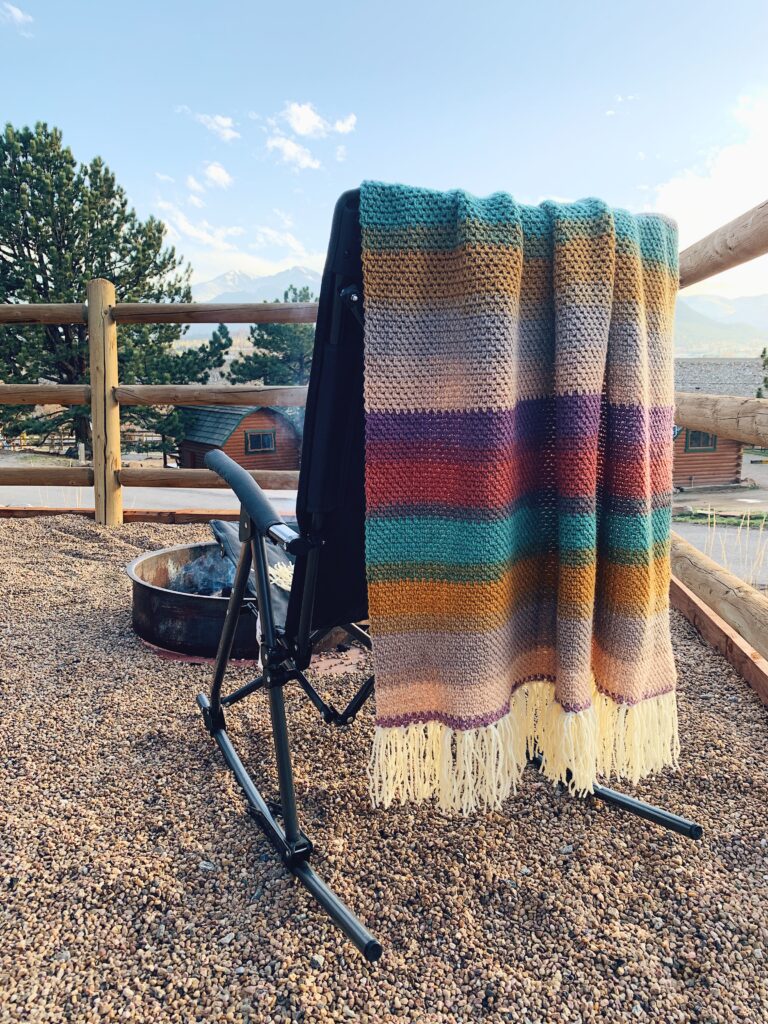
Preventing Common Issues
Maintaining your crochet blanket's beauty and longevity doesn't end with cleaning and drying. Here are some tips to help you prevent common issues and keep your cherished creation in top-notch condition:
Dealing with pilling and fuzziness:
- Over time, some crochet blankets may develop small pills or fuzziness. You can use a fabric shaver or a lint remover to carefully remove these unwanted blemishes, giving your blanket a fresh appearance.
Repairing loose threads or snags:
- Regularly inspect your crochet blanket for loose threads or snags. Use a crochet hook to gently weave in any loose ends and repair snags before they become more significant issues.
Storing your crochet blanket properly:
- When your blanket is not in use, store it in a cool, dry place, away from direct sunlight and moisture. Consider using mothballs or cedar blocks to prevent moth damage, especially if your storage area is prone to pests.
Avoiding rough usage:
- Be mindful of using your crochet blanket in situations where it may encounter rough surfaces or excessive friction, as this can lead to premature wear and damage.
Regularly inspect and maintain your blanket:
- Periodically inspect your crochet blanket for any signs of wear, loose stitches, or damage. Address any issues promptly to prevent them from worsening.
By following these tips, you'll not only enjoy the comfort and beauty of your crochet blanket but also ensure it remains in excellent condition for years to come. With proper care and attention, your crochet masterpiece can continue to provide warmth and comfort for generations.
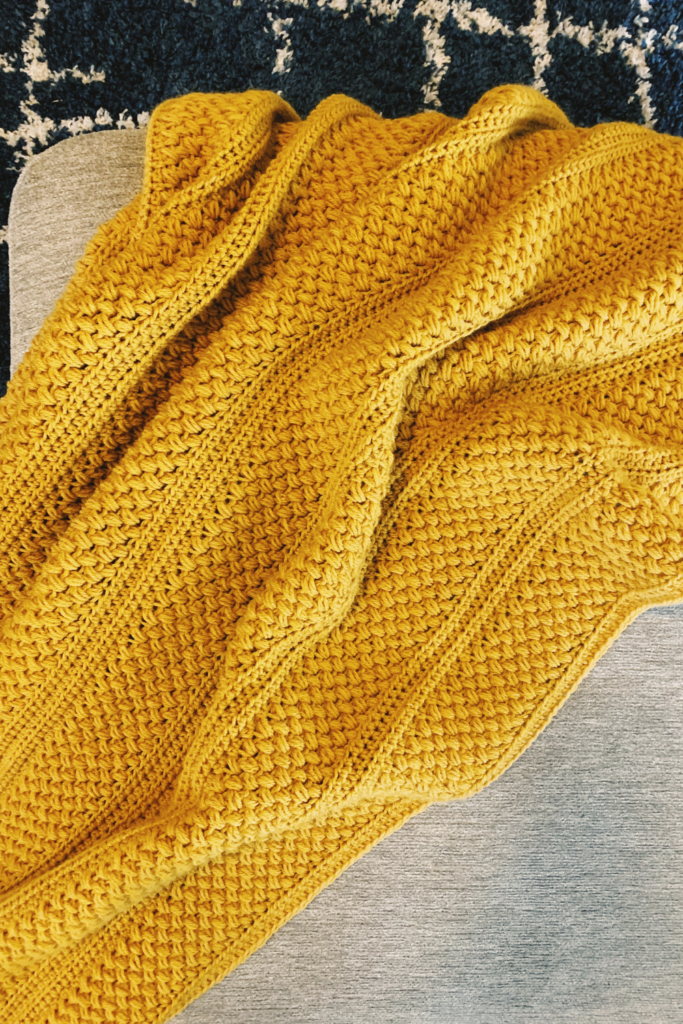
In Conclusion
Proper care of your crochet blanket ensures it keeps its original shape and is in good condition for years to come.
I hope this guide gives you the confidence you need to take fantastic care of your handmade blanket.

